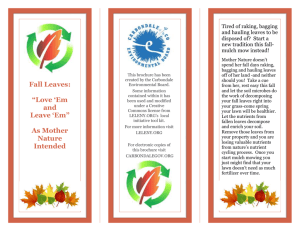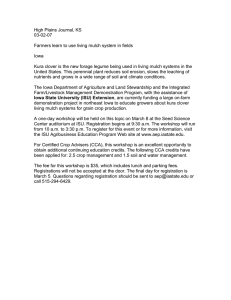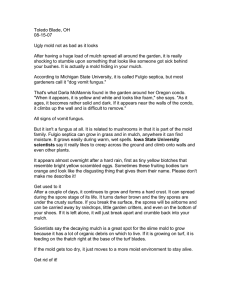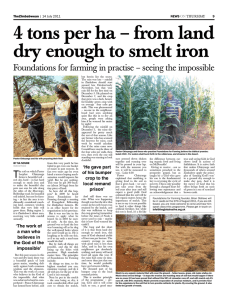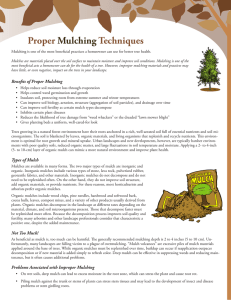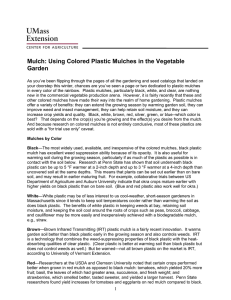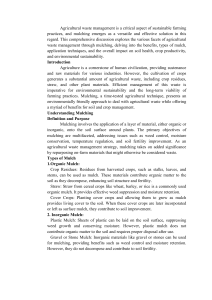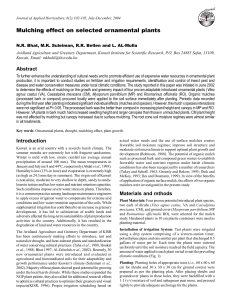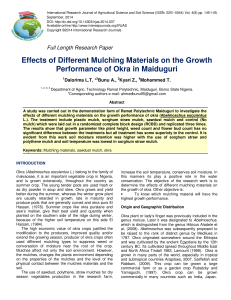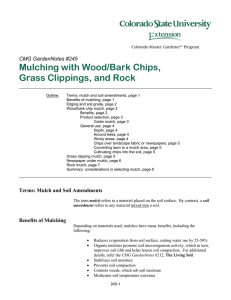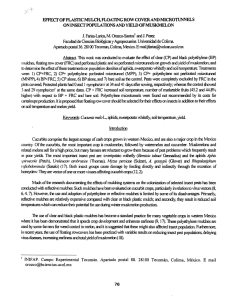How Do I Care For My Tree?
advertisement
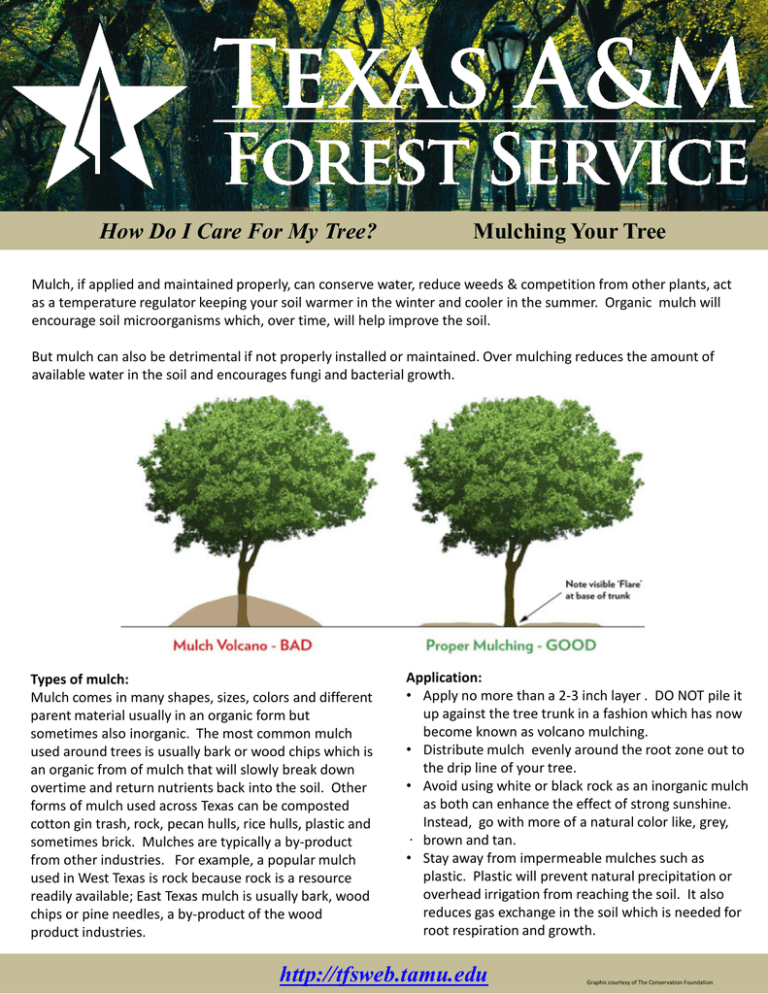
How Do I Care For My Tree? Mulching Your Tree Mulch, if applied and maintained properly, can conserve water, reduce weeds & competition from other plants, act as a temperature regulator keeping your soil warmer in the winter and cooler in the summer. Organic mulch will encourage soil microorganisms which, over time, will help improve the soil. But mulch can also be detrimental if not properly installed or maintained. Over mulching reduces the amount of available water in the soil and encourages fungi and bacterial growth. Types of mulch: Mulch comes in many shapes, sizes, colors and different parent material usually in an organic form but sometimes also inorganic. The most common mulch used around trees is usually bark or wood chips which is an organic from of mulch that will slowly break down overtime and return nutrients back into the soil. Other forms of mulch used across Texas can be composted cotton gin trash, rock, pecan hulls, rice hulls, plastic and sometimes brick. Mulches are typically a by-product from other industries. For example, a popular mulch used in West Texas is rock because rock is a resource readily available; East Texas mulch is usually bark, wood chips or pine needles, a by-product of the wood product industries. Application: • Apply no more than a 2-3 inch layer . DO NOT pile it up against the tree trunk in a fashion which has now become known as volcano mulching. • Distribute mulch evenly around the root zone out to the drip line of your tree. • Avoid using white or black rock as an inorganic mulch as both can enhance the effect of strong sunshine. Instead, go with more of a natural color like, grey, . brown and tan. • Stay away from impermeable mulches such as plastic. Plastic will prevent natural precipitation or overhead irrigation from reaching the soil. It also reduces gas exchange in the soil which is needed for root respiration and growth. http://tfsweb.tamu.edu Graphic courtesy of The Conservation Foundation

